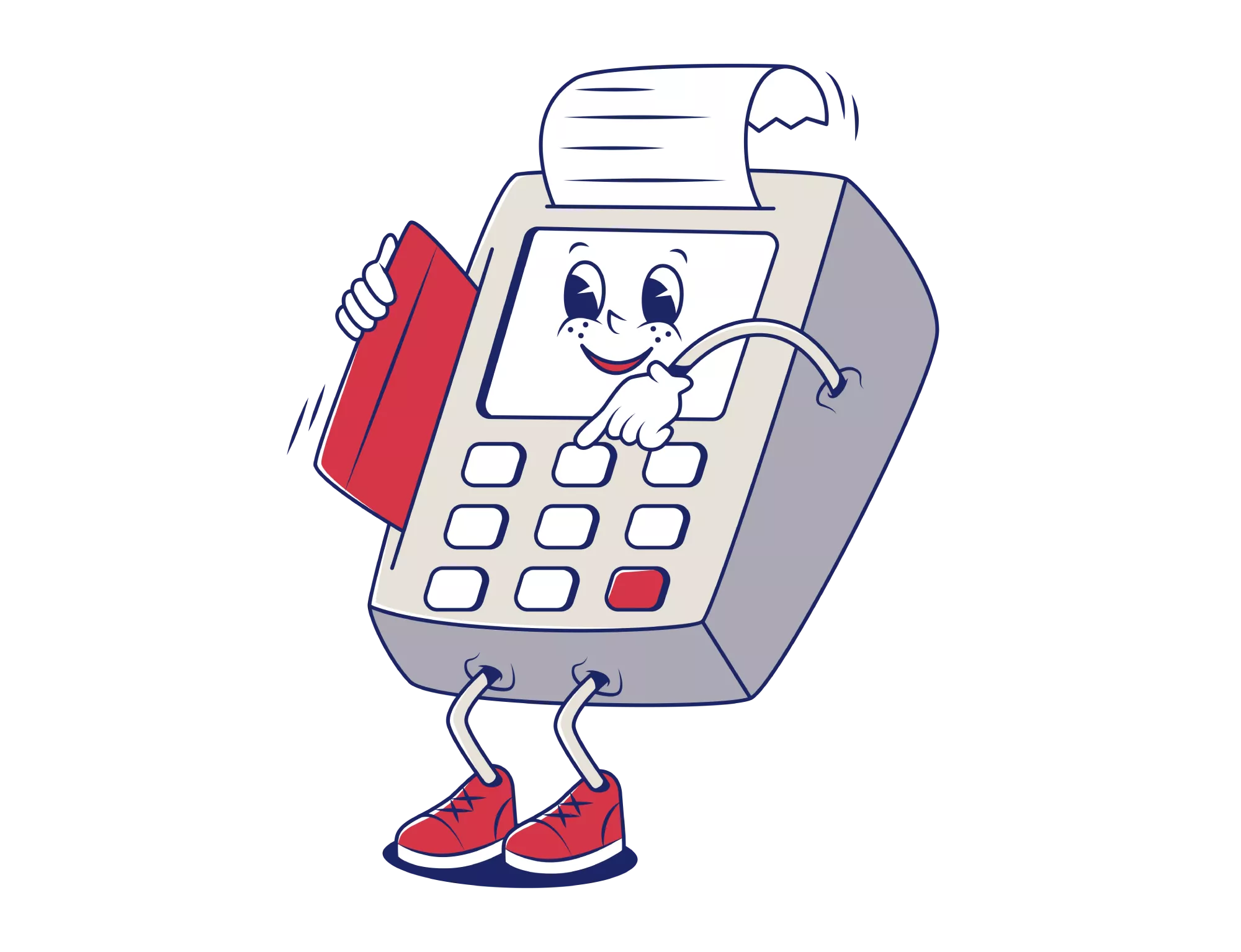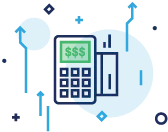
TABLE OF CONTENTS
- What Is a Payment Gateway?
- How Does a Payment Gateway Work?
- Why You Probably Need a Payment Gateway
- How Much Does a Payment Gateway Cost?
- Are Payment Gateways Secure?
- Payment Gateway vs Payment Processor vs Merchant Account
- What to Consider When Choosing a Payment Gateway
- Your Gateway to the Best Payment Processing: PaymentCloud
- Payment Gateway FAQs
To be a competitive business in 2024, you must accept online payments, and to offer these payment methods through a secure, reliable mechanism, you must obtain a payment gateway. This advanced payment technology is the software responsible for protecting the sensitive financial data transferred between financial institutions during payment processing, but that’s not all a gateway can do for your business. Below, find out how a payment gateway can lower your processing fees, streamline your operations, and prevent fraud, chargebacks, and other payment-related issues. We’ll also explain how a payment gateway actually works—because that’s kind of important, too.
What Is a Payment Gateway?

A payment gateway is a piece of technology that securely processes online, in-app, and card-not-present credit and debit card transactions by capturing, storing, and passing tokenized card information from the customer to the acquirer. It notifies the merchant whether their payment has been accepted or declined, serving as an intermediary between the customer and the merchant. Once approved, funds are taken from the customer’s account and deposited into the merchant’s bank account. The payment gateway ensures data security by encrypting sensitive payment information before relaying it to the acquirer and issuer, following strict PCI-DSS compliance standards.
While card-present transactions taken in-person may utilize a point-of-sale (POS) system to secure sensitive data, eCommerce sales require a payment gateway to do so. And with eCommerce sales expected to comprise 24% of retail by 2026, you’ll neglect an increasingly large portion of the consumer market if you don’t offer your products for purchase online.[1]Forbes. “38 E-Commerce Statistics Of 2024“. Accessed December 1, 2023.
Additionally, payment gateways secure the financial data associated with card-not-present transactions, including purchases made by mail, phone, email, or any other method requiring the merchant to key in the customer’s payment information.
How Does a Payment Gateway Work?
Now that you’re familiar with what payment gateways are, let’s dive into how this security mechanism actually works within payment processing:
- To pay for a purchase, a customer either enters their credit card information online, utilizes an in-store card reader, or a merchant enters the customer’s credit card information on a virtual terminal.
- The payment gateway captures the cardholder information, encrypts it, authenticates it, and transmits it to the payment processor.
- The payment processor communicates the encrypted transaction information to the card-issuing bank, which either approves or denies the transaction.
- The payment processor notifies the payment gateway of the authorization or decline, then the payment gateway communicates the authorization or the decline to the originator of the transaction.
- In the event of an authorization, the payment processor facilitates the backend transfer of funds from the issuing bank to the acquiring bank, which houses the business’s merchant account.
- Upon the payment reaching its settlement, the funds are released from the merchant account and deposited into the business bank account.



Why You Probably Need a Payment Gateway
Offering online shopping options is practically a prerequisite for success in today’s market. And what’s a prerequisite for ensuring secure online shopping payment processing? That’s right—a payment gateway.
In addition to safeguarding online transactions, payment gateways grant you access to a virtual terminal through which you can input credit card information received from customers via mail order or telephone (MOTO), email, invoice, or other appropriate means. And in the event your in-store card reader is unable to read your customer’s card, you can troubleshoot by keying their card data into your virtual terminal.
How Much Does a Payment Gateway Cost?

The cost of payment gateway services varies from provider to provider. However, the cost is usually comprised of a flat monthly fee and a small fee for each transaction. Regarding the monthly fee, the industry-standard flat rate is $19.95, though custom pricing is available for larger businesses.
In addition to the aforementioned credit card processing fees, a provider may charge various fees on a monthly or annual basis, such as a membership fee or batch processing fee. When searching for a payment gateway provider, it’s important to analyze every provider’s fee structure and inquire about what services you’re receiving for each fee.
Are Payment Gateways Secure?
Payment gateways are literally responsible for safeguarding sensitive financial information during payment processing. So, yeah, they’re secure. In fact, to showcase the technological lengths gateways go to for security’s sake, let’s review the protocols most frequently utilized by payment gateways.
PCI DSS-Compliant Gateways
The Payment Card Industry Data Security Standard (PCI DSS) is a set of security standards that entities associated with payment processing must meet. This includes payment gateways. Before partnering with a provider, confirm that they’re PCI compliant. You should also inquire about how they, as your provider, can help your business achieve and maintain PCI compliance.
Data Encryption
Data encryption is the practice of converting data from readable plaintext into encoded ciphertext. This encoded text can only be decrypted by a user with the encryption key. And because the data is unreadable to parties without the encryption key, this security measure deters malicious actors from stealing cardholder information.
Secure Electronic Transaction (SET)
Secure Electronic Transaction (SET) is a protocol that ensures the protection of sensitive cardholder information during transmission via electronic portals online. By utilizing encryption and hashing practices, SET prevents hackers and other malicious actors, and even merchants themselves, from accessing customers’ cardholder data during transmission.
Tokenization
Credit card tokenization replaces sensitive card data with non-sensitive tokens. The sensitive data is stored and only accessible through a tokenized mapping system. This means the original data is completely inaccessible without the tokenized system’s separately stored data. As a result, a security breach of tokenized data does not compromise sensitive data.
Secure Socket Layer (SSL)
Secure Socket Layer (SSL) technology protects the connections between web servers and web browsers, as the internet itself is an insecure network. Providing privacy to internet communications, SSL encrypts the link between servers and browsers ensuring the data passed between them remains secure.
Originally introduced by Netscape in 1995 as a method to secure online transactions between businesses and consumers, SSL evolved into Transport Layer Security (TLS). If your payment gateway indicates that they utilize TLS, this provides the same protective services as SSL.
Note: Websites utilizing SSL/TLS security have “HTTPS” in their URL instead of “HTTP.”
Payment Gateway vs Payment Processor vs Merchant Account
While payment gateways, payment processors, and merchant accounts are three essential tools in payment processing, each performs a very different function. Before detailing their different functions, we’ll outline the four key players of each transaction:
- Merchant: The owner of the business (you) being paid for their goods or services.
- Customer: The person paying to acquire the merchant’s goods or services.
- Issuing Bank: The financial institution hosting the customer’s funds.
- Acquiring Bank: The financial institution hosting the business’s merchant account.

Upon your customer inputting their card information, your payment gateway authenticates, encrypts, and transmits the transaction details to your payment processor. Your payment processor then communicates these details to the issuing bank and acquiring bank. The issuing bank will either approve or deny the transaction. Your processor communicates the authorization or decline to your gateway, which then communicates this to you, the merchant. By the way, this all happens in seconds.
Afterward, the processor delivers the transaction funds to your merchant account, where your funds are held until settlement. Generally, these funds are accessible in one to two business days, at which point they’re transferred to your business bank account.
While merchant accounts and payment gateways are quite obviously different from one another, it’s a bit easier to confuse payment processors and payment gateways, as their technological functions are so closely interlinked. Just remember that a gateway’s main responsibility is securing transaction data, while a processor’s main responsibility is communicating that data to the proper parties and executing the transaction accordingly.
What to Consider When Choosing a Payment Gateway
With so many payment gateway providers, how do you find the perfect payment gateway for your business? Beyond comparing pricing (obviously), below are a few other elements you should consider while shopping for a payment gateway provider:
1. Integration Compatibility
When choosing the best payment gateway for your business, compatibility is a crucial factor. Specifically, it’s important to confirm your payment gateway is compatible with the payment processor you’re currently using and/or plan to use. After that, confirm your payment gateway integrates with your website. These two integration compatibilities are necessary for utilizing gateway security while accepting online payments.
If automation is your thing, don’t stop there! Your best bet is partnering with a gateway offering a generous amount of compatible integrations with operational software. By integrating and automating operations, you can streamline many time-consuming tasks.
2. Open APIs
An application programming interface (API) is a connection between computers or computer programs that allows them to communicate with each other. APIs have been implemented to achieve “open banking,” a system in which third parties, like payment gateways, may access necessary information from financial institutions.
Meanwhile, open APIs refer to proprietary API software made accessible to developers for programmatic purposes. Regarding your payment gateway, open APIs allow your servicer to tailor your gateway to meet the exact needs of your particular business.
3. Advanced Fraud Tools

Your payment gateway can be a vital tool in preventing eCommerce fraud and credit card fraud. To protect your transactions from fraud, your provider may offer the below features:
- Address Verification Service (AVS)
- Card Verification Value (CVV) Verification
- 3-D Secure Authentication
- Device Identification
- Lockout Mechanisms
- Transaction Risk Scoring
- Geographic Limitations
- Ticket and/or Transaction Limitations
By working with an experienced payment service provider, you can adjust your payment gateway to achieve the highest level of protection necessary for your business without losing legitimate customers.
Note: 3-D Secure Authentication may also be referred to as Verified by Visa or Mastercard SecureCode. By implementing these services, your business may also be subject to lower interchange fees. (You read that correctly: cheaper processing fees and increased security. A win-win!)
4. Multi-Currency Conversion Capabilities
Multi-currency conversion is a feature that displays the prices of the goods and/or services on your eCommerce store as the local currency of your customers. If growing a global clientele is one of your goals, confirm that your gateway has multi-currency conversion capabilities.
5. Multiple MID Capabilities
A merchant identification number (MID) is a unique identifier given to merchants by their merchant account acquirer. Most businesses only require one MID, but a business may require multiple MIDs if it has differing revenue streams. For example, A hotel with a bar in its lobby may have a MID for its hotel and a MID for its bar. If your business has or may require more than one MID, confirm that your payment gateway has multiple MID capabilities. If it does, you can enable the smart routing feature within your payment gateway to automatically route each payment to the most suitable MID based on different factors of your choice. This type of payment orchestration helps to increase payment acceptance rates and decrease transaction costs over time.
6. Support Multiple Payment Types

Not every payment gateway supports every payment method. So, make sure to confirm your payment gateway supports the payment methods your customers most often utilize. In addition to all major credit and debit cards, keep in mind payment methods such as internationally-issued cards, cryptocurrencies, eChecks, and various other alternative payment options.
7. Built-in Virtual Terminal
If you’d like the option of keying in your customer’s payment information yourself, confirm that your payment gateway provider will supply you with a built-in virtual terminal.
With this feature, a merchant may access their virtual terminal, input their customer’s credit card, debit card, or checking account information, then click “process” to complete the transaction. Not only is this essential for orders made by email, phone, or mail order, but it also allows you to troubleshoot if your card reader cannot read your customer’s card.
8. QR Code Links
Speaking of alternative payment methods, the utilization of QR codes as a payment method has been gaining popularity in recent years. In this case, your customer scans a QR code, which takes them to a checkout page.
You can create QR codes for payments by partnering with a payment company offering this specific service. However, in order to accept QR payments, your payment gateway must support QR code applications. And while this is still a niche payment method, it’s growing in popularity, so ensuring your provider has the ability to support QR payments is recommended.
9. Automatic Card Update
An automatic card updater feature automatically updates any outdated credit card information your business has on file. These updates may include new expiration dates and/or new card numbers. If your business operations include recurring billing, this is a feature you should confirm your provider offers.
10. Accounting Software Integration Compatibility

Advanced payment gateways can seamlessly integrate with your business’s operational software. By integrating your accounting software, payroll software, and other similar software with your payment gateway, you can streamline your business’s operations. Instead of spending time adding up numbers, you can focus on the tasks that actually make those numbers add up.
11. Level II & III Processing Support
By default, customer-to-business (C2B) transactions are facilitated by way of Level I processing. However, Level II and Level III processing are available for business-to-business (B2B) and government-to-business (G2B) transactions. These levels of processing require more information. Thus, they are considered more secure and, in turn, incur lower fees. However, your payment gateway must support Level II and Level III processing in order to execute these transactions.
Your Gateway to the Best Payment Processing: PaymentCloud
In today’s marketplace, your business needs a payment gateway in order to be competitive. At PaymentCloud, we pride ourselves on connecting our clientele to the payment gateway solution that best fits their needs. Beyond customizing your gateway to maximize security against fraud and best support your payment operations, we’ll also advocate for you to receive all the features you want at cost-effective rates within your business’s budget. Additionally, we only work with PCI-compliant gateway providers, many of which offer services to ensure your business practices achieve PCI compliance as well! Your payment gateway is only as good as your provider, so go with the best: PaymentCloud.
Payment Gateway FAQs
What’s the difference between a virtual terminal and a payment gateway?
A payment gateway is a technology that securely communicates sensitive payment information to your payment processor. Meanwhile, a virtual terminal essentially turns a device into a merchant-facing credit card terminal through which you can manually enter your customer’s cardholder information for payment processing. Once entered, your payment gateway then secures the sensitive cardholder data and communicates that information to the payment processor.
Most providers supply their clientele with a virtual terminal when they obtain a payment gateway, but these are two different mechanisms that complete different functions.
What is a white label payment gateway?
The term “white label payment gateway” refers to a provider whose gateway may be customized with your own business name and outfitted to coalesce with your brand. Essentially, it veils the fact that a third-party provider is involved in your business transaction, creating a customer experience totally and completely associated with your business.
Is PayPal a payment gateway or processor?
As a payment service provider, PayPal offers both a gateway and a processor. However—and this is a big however—it does not offer individual gateways or processors to merchants.
When using PayPal, or any payment aggregator compared to a payment gateway, your transactions are funneled through an aggregate gateway, processor, and merchant account. These channels belong to PayPal and you pay to access their channel. As such, these channels cannot be customized to meet the exact needs of your business. Additionally, PayPal may freeze or terminate your services if you violate their terms of service, which typically impose more limitations than traditional gateway providers.
As a payment solution, PayPal’s services may be set up quickly and are easy to use, but they are neither customizable nor completely reliable.
How do I set up a payment gateway?
To set up a payment gateway, you will need to obtain a VAR sheet from your merchant service provider. A VAR sheet is a document that contains your merchant account information and is inputted into the backend of your payment gateway. This configuration allows communication between the payment gateway and the payment processor.
How can I make my current payment gateway PCI-compliant?
PCI compliance is of the utmost importance in the payments industry. Being PCI non-compliant results in fees that could otherwise be avoided, unnecessarily eating into your revenue. Even worse, non-compliance means your business’s and customers’ sensitive financial information is not protected from malicious actors.
Before partnering with a payment gateway provider, it’s imperative you ensure they’re PCI compliant and inquire about their services that may help your business meet compliance as well.
Which payment gateway is the best?
The best type of payment gateway for your business depends on your business’s specific needs. Before searching for a provider, analyze your business’s target demographic to assess their preferred payment methods, geographic location, and other specific factors that may impact payment processing.
Additionally, analyze your operational needs, including what features, services, integrations, and compatibilities are necessary for your business. Armed with this information, you’ll be well-suited in your search for your perfect provider.
Can I get a payment gateway if my business is high-risk?
Yes, you can still get a payment gateway for your high-risk business. Payment gateway providers will assess the risk associated with your business and may charge higher fees or require additional security measures to mitigate the risk. To increase your chances of finding a provider, you should be prepared to provide detailed information about your business, including your business model, sales volume, and any risk mitigation strategies you have in place. Additionally, having a good credit score and a solid financial history can help you secure a payment gateway provider for your high-risk business.
Can I build my own gateway?
You can build your own payment gateway, but do you want to? Building a self-hosted payment gateway on your own servers could cost as much as half a million dollars. While this tedious process would give you complete control over your very own payment gateway, it would also leave the burden of PCI compliance and data security completely on your shoulders. A white-label payment gateway tailored to your business needs offers many of the same benefits as a self-made gateway, without the time, money, or headache.







